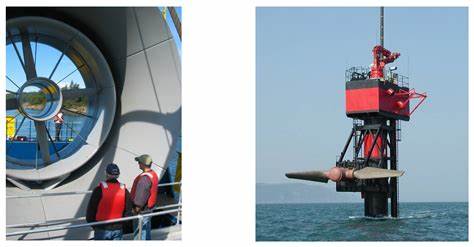
Introduction
Harnessing Energy from Ocean Currents has emerged as a promising solution to meet the increasing demand for sustainable power generation. This article explores the history, key concepts, and various techniques involved in tapping into the potential of ocean currents. Additionally, it delves into the environmental, economic, and social implications of this technology, along with real-world case studies and recent developments.
Historical Background
Throughout history, humans have recognized the potential of ocean currents as a source of energy. The utilization of ocean currents for power generation dates back to ancient times, where civilizations used tidal mills to grind grains. Over the years, significant milestones have been achieved, such as the construction of the world’s first tidal barrage in France in the 1960s.
Key Concepts and Definitions
To understand the intricacies of harnessing energy from ocean currents, it is essential to define key terms and concepts. Ocean currents refer to the continuous, directed movement of seawater caused by a variety of factors, including wind, temperature, and salinity gradients. Extracting energy from these currents involves converting the kinetic energy of moving water into usable electricity through various methods.
Main Discussion Points
Overview of different techniques used for harnessing energy from ocean currents
There are two primary techniques employed for capturing energy from ocean currents: tidal energy capture systems and ocean current turbines. Tidal barrages, involving the construction of a dam-like structure across an estuary, capture the energy released during the rise and fall of tides. In contrast, tidal stream turbines operate similarly to wind turbines, but instead of wind, they harness the kinetic energy of tidal currents.

Environmental impact and sustainability of harnessing energy from ocean currents
As with any form of energy generation, there are potential environmental impacts associated with harnessing energy from ocean currents. These include effects on marine ecosystems, such as changes in water flow patterns and disruption of marine habitats. Additionally, concerns about noise pollution and the potential harm to marine life need to be addressed. To mitigate these impacts, ongoing research focuses on developing technologies that minimize ecological footprints and protect marine ecosystems.
Economic and social benefits of harnessing energy from ocean currents
Harnessing energy from ocean currents has several economic and social benefits. One significant advantage is the potential for job creation in the renewable energy sector. With the increasing demand for sustainable energy, the industry offers employment opportunities in project development, maintenance, and research. Furthermore, local economies can benefit from ocean current energy projects, leading to economic growth in coastal communities. Additionally, this technology contributes to energy security and diversification of energy sources, reducing reliance on fossil fuels.
Case Studies or Examples
Real-world examples and case studies provide insights into successful ocean current energy projects. The MeyGen tidal energy project in Scotland stands as the world’s largest tidal stream array, generating clean energy for thousands of homes. The project serves as a valuable lesson in scaling up operations and identifying strategies to overcome technical challenges.
Current Trends or Developments
The field of harnessing energy from ocean currents is witnessing continuous advancements and research. Recent developments include the use of advanced materials and design techniques to enhance turbine efficiency and durability. Additionally, research focuses on understanding the environmental impacts more comprehensively and developing innovative solutions to mitigate potential harm.
Challenges or Controversies
Harnessing energy from ocean currents faces certain challenges and controversies. Some barriers include high upfront costs, technological limitations, and the need for specialized infrastructure. Furthermore, differing viewpoints exist regarding the environmental and economic impacts of this technology. It is crucial to address these concerns through ongoing research and collaboration among stakeholders.
Future Outlook
The future of harnessing energy from ocean currents holds immense potential. As technology advances and costs decrease, it is expected that this sustainable energy source will contribute significantly to global power generation. Emerging technologies, such as underwater kite systems and advanced turbine designs, offer promising avenues for further exploration and growth in this field.
Conclusion
Harnessing energy from ocean currents presents a viable and sustainable solution to meet our growing energy needs. By utilizing the power of ocean currents, we can reduce reliance on fossil fuels, minimize environmental impacts, and promote economic growth. With ongoing research and advancements, the potential for this technology is boundless.
References
– Smith, G. H., & Wootton, R. J. (2017). Marine Renewable Energy Handbook. IET.
– Krohn, S. (2015). Tidal Energy: The Next Wave? Earthscan.
– The World Energy Council. (2016). Harnessing the Tides: Tidal Energy Potential in the United States. Retrieved from https://www.worldenergy.org/assets/downloads/Harnessing_the_Tides_Tidal_Energy_Potential_in_the_United_States_2016.pdf